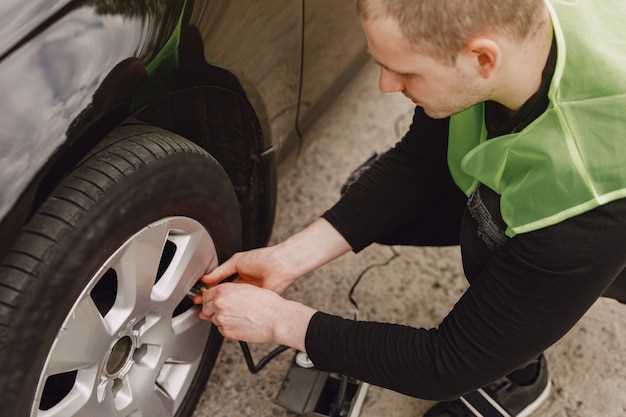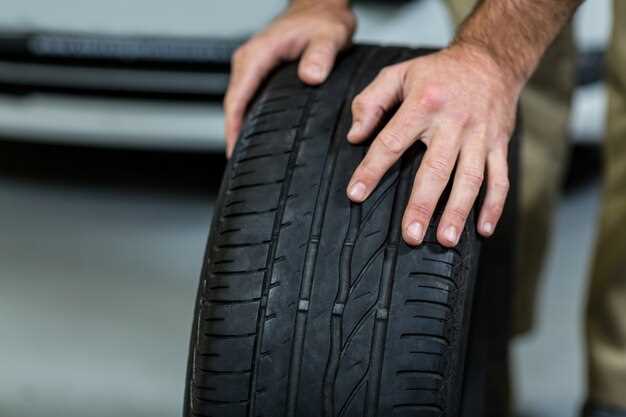
How to check your tire tread depth
- Dominique Kaye
- 0
- Posted on

Maintaining adequate tire tread depth is crucial for the safety and performance of your vehicle. Tires play a significant role in how well your car grips the road, especially in adverse weather conditions. Insufficient tread depth can lead to reduced traction, increasing the risk of accidents. Knowing how to measure your tire tread depth accurately is essential for ensuring your safety on the road.
Over time, tires naturally wear down, and it can be challenging to gauge when they are no longer safe to use. Using simple tools and techniques, you can regularly check your tire tread depth and determine if it’s time for a replacement. This article will guide you through the process, emphasizing the importance of having sufficient tread depth for optimal driving safety.
In addition to ensuring your safety, understanding how to measure tire tread depth can also help you save money in the long run by preventing premature tire wear. With a few basic methods, you can keep your tires in top condition and enjoy a safer driving experience.
Using a Tread Depth Gauge for Precise Measurement

A tread depth gauge is an essential tool for accurately measuring the tread depth of your tires. With this device, you can determine whether your tires have sufficient tread for safe driving conditions.
To begin, you simply need to insert the probe of the gauge into the tire’s tread groove. Make sure to select multiple grooves across different areas of the tire to ensure an accurate reading. This step is crucial as tread wear can be uneven due to various factors such as driving habits and road conditions.
Once the probe is fully inserted, you will need to read the measurement. Most tread depth gauges will provide a clear reading in either millimeters or 32nds of an inch, allowing you to compare it against the minimum legal tread depth, which is typically 2/32 inches. If your measurement falls below this value, it is time to consider replacing your tires.
Using a tread depth gauge is not only straightforward but also provides a precise way to ensure your tire tread is adequate for maintaining traction and control. Regularly checking tread depth can help you avoid accidents and improve your vehicle’s overall performance on the road.
In summary, incorporating a tread depth gauge into your routine maintenance checks is a practical approach to safeguarding your driving experience. Remember, adequate tread depth is crucial for effective braking and handling in all weather conditions.
Visual Inspection Techniques to Assess Tread Wear

Regular visual inspection of your tires is crucial for ensuring safety and optimal performance. By examining the tread of your tires, you can identify signs of wear that may affect traction and handling. One effective method is to look for uneven wear patterns, which can indicate misalignment or improper inflation. Check the inner and outer edges of the tire for any significant differences in tread depth.
Another technique is the penny test, where a penny is inserted into the tread grooves. If you can see the top of Lincoln’s head, it’s time to replace your tires as they are worn down to a critical level. Additionally, inspect the tread for visible cracks, cuts, or foreign objects that may compromise safety.
Be mindful of the tread wear indicators, also known as wear bars, which are built into the tire. These indicators become visible when the tread has worn down to a level that requires replacement. Finally, perform a comprehensive check for any bulges or blisters on the tire surface, as these can signal a structural weakness. Keeping a close eye on these visual clues will help maintain safety on the road by ensuring your tires are in good condition.
Understanding the Importance of Tread Depth for Safety
Tread depth is a critical factor in ensuring the safety of your vehicle. Tires are the only contact point between your vehicle and the road, meaning that adequate tread depth directly impacts traction, handling, and braking performance. When tires have insufficient tread, they struggle to grip the road, especially in wet or slippery conditions, which can lead to a significantly increased risk of accidents.
Moreover, adequate tread depth helps channel water away from the tire, reducing the likelihood of hydroplaning. Tires with worn tread are more prone to losing contact with the road surface during heavy rainfall, diminishing your ability to steer and stop safely. Regularly measuring your tire tread depth allows you to assess whether your tires are performing within safe parameters.
Additionally, maintaining proper tread depth can enhance fuel efficiency. Tires with insufficient tread can create higher rolling resistance, which may lead to increased fuel consumption. Thus, ensuring your tires are in optimal condition contributes not only to your safety but also to cost savings over time.
In summary, monitoring tread depth is essential for maintaining vehicle safety. By doing so, you can prevent compromised handling, enhance your vehicle’s performance, and ensure a safer driving experience for yourself and others on the road.
